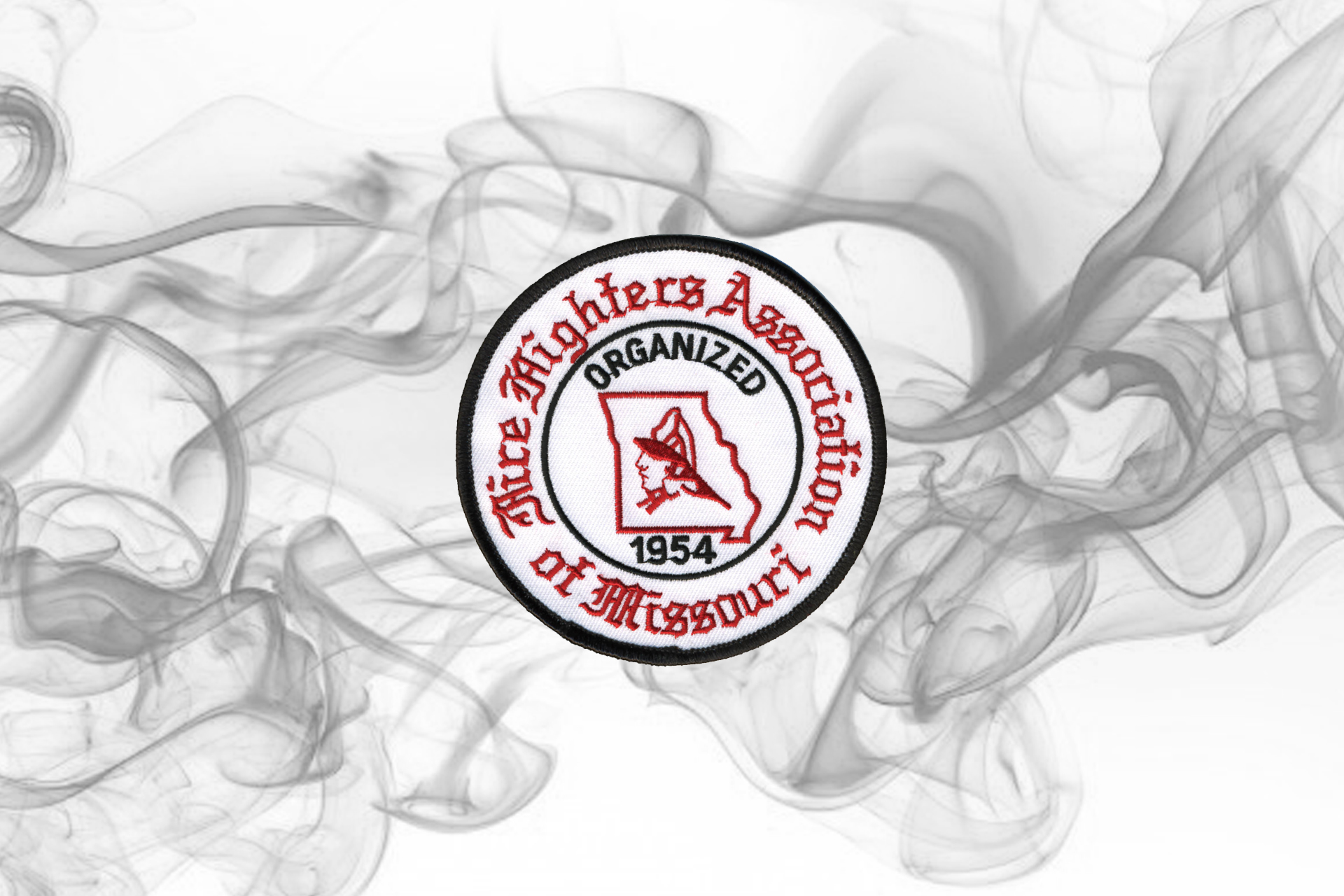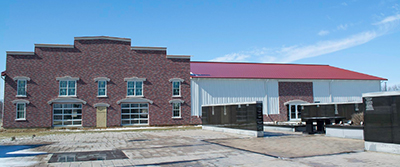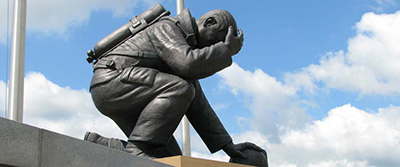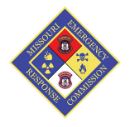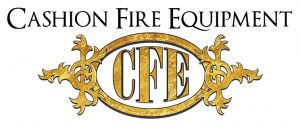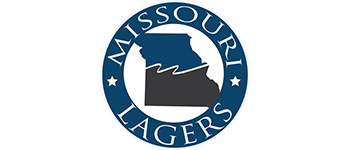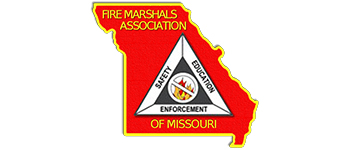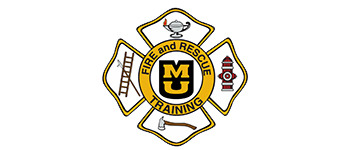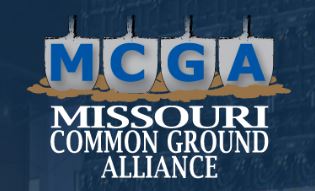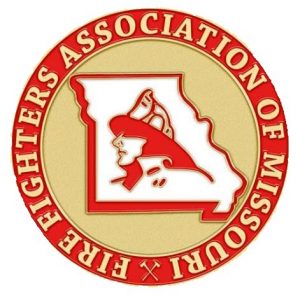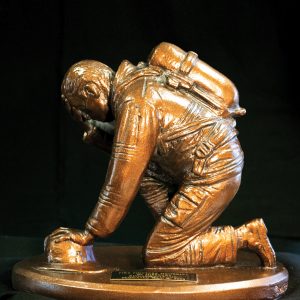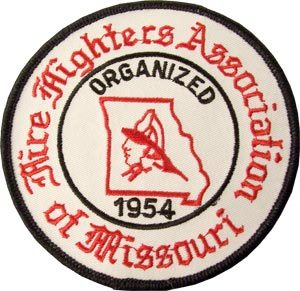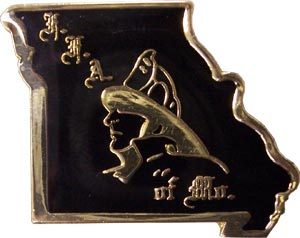A Part of Fire Service History©
Beginning in the early days of the volunteer fire companies in Colonial America, there was a simple but effective tool used by the fire officer (Foreman, Engineer) to direct his assigned command. Though that tool is no longer used in active service, it is still symbolically present on every fire scene in the insignia of the modern-day chief fire officer. That tool that is now configured in the insignia of rank is the speaking trumpet.
Coming into use in the fire service in the mid-1700s, the speaking trumpet soon spread throughout the American Colonies and on into the early development of the United States Fire Service. Eventually being replaced by technology, the speaking trumpet still holds an important place as a symbol and tradition of the fire service. Besides being used as rank insignia for officers, in many fire departments, the trumpet is still used today as a symbolic presentation gift in ceremonies to honor members or supporters of the fire service. In other situations, it stands in honored places like fire museums, cemeteries, or memorials representing the past valor and sacrifices of the American Fire Service. This chapter of A Part of Fire Service History will focus on the fire service speaking trumpet and its significant role as part of the customs and traditions of the fire service.
Fire Speaking Trumpet Defined
In defining the historical term of the speaking trumpet, it would be best to refer to a respected and knowledgeable reference source of the time. The Century Dictionary: An Encyclopedic Lexicon of the English Language, edited by William Dwight Whitney, PhD, LLD and first published in 1895, defines the “speaking trumpet’ as:
A trumpet-shaped instrument by which the sound of the human voice is reinforced so that it may be heard at a great distance or above other sounds, as in hailing ships at sea or giving orders at a fire.1
Though the 1980 National Fire Protection Association (NFPA) book Fire Terms does not list the term speaking trumpet, it does delineate the word “trumpet.” It defines trumpet in a fire service context as: “A symbol of rank in the fire service dating from the time speaking trumpets were used to give voice commands at fires.”2 The definition then goes on to describe the trumpet as used in the insignia of fire officer ranks (more on this later). The Merriam-Webster Dictionary gives a little more descriptive use by defining it as “a trumpet-shaped instrument for intensifying and directing the sound of the human voice.”3
So based on the guidance of these reference sources, in this chapter we will define the historic Fire Service Speaking Trumpet as:
An elongated cone shaped acoustic device expanding in diameter from a mouth piece to an enlarged open bell end, historically used to amplify the fire officer’s voice in giving tactical commands to communicate over the noise or distances encountered on the fire ground. In the late 1800’s it began to be used as a symbol of rank on fire officer uniforms. The Trumpet continues to be used today as a traditional rank insignia, especially for chief fire officers.4
As can be seen the speaking trumpet as a communication tool used by a historic fire officer to issue commands has transitioned over time to become a symbol of command rank in the fire service. The more trumpets on a collar insignia or badge, the higher the level of command rank.
The trumpet insignia identifying officer rank is sometimes referred to as a “bugle” by a layperson, the novice firefighter, or the uneducated professional. However, this term is incorrect. Fire service rank is not a symbol of “a musical instrument like a simple [bugle] trumpet,”5 It should be noted that one blows air into a bugle to make a musical sound, one speaks words into a speaking trumpet to amplify verbal communication, in other words give commands. Therefore, the term “bugle” is not interchangeable with the fire term “trumpet” or “speaking trumpet.”
Despite clear historical evidence to the contrary, many fire service publications and websites still refer to the speaking trumpet as a bugle. This chapter on speaking trumpets will provide the history of this device and thus enlighten and educate on the correct terminology. Now that the terminology has been defined we will examine the development and history of this important tool.

How a Speaking Trumpet Works
In researching the physics of how a historic speaking trumpet worked to manually amplify the human voice, there was minimal information available. It was necessary to examine a similar device but with a different name. The acoustic megaphone is an unpowered cone or horn-shaped device “used to increase the audibility of the human voice.”6 Most people today have seen these devices used by cheerleaders at sporting events or lifeguards at the beach to direct and amplify their voice to communicate. This device is another version of a speaking trumpet (without the fancy trim) and helps explain how these types of devices work. They work by using the acoustics principles of directivity and acoustic impedance. The directivity of the cone-shaped device “acts like a funnel to channel sound energy in the direction it is pointed.”7 Thus concentrating the energy of the sound. Acoustic impedance at its simplest is defined as “the opposition of a medium to a longitudinal wave motion.8 Regarding the megaphone or speaking trumpet, this is the transition of the waveform “from the geometry of your mouth to the geometry of the air more gradually, which allows more sound power to transfer to the air.”9
In traditional use, the fire officer holds the trumpet in their hand and points the bell end in the direction one wishes to project their voice. Placing the mouthpiece over their lips, the officer speaks loudly into the trumpet. It helps to speak slowly and properly enunciate one’s words to be better understood.
Several reference sources describe the speaking trumpet as making a “stentorian” sound. An example of this is Ernest Earnest’s book The Volunteer Fire Company in which he describes the fire scene where “the fire trumpets roar out stentorian orders.”10 The word “stentorian” is defined as “extremely loud” or “marked by intensity or volume of sound.”11
History of Sound Amplification
Even though early man did not understand the physics of it, at some point, somewhere, people learned that if they cupped their hands around their mouth when shouting their voice could be heard farther away. This concept must have become a common practice for early distance communication.
The bases of sound – Our vocal cords vibrate as air passes over them producing sound waves that travel up and out the mouth and disperse in the air around us. As this occurs, “the energy per unit area or intensity of sound decreases.”12 By cupping one’s hands around the mouth when speaking the sound waves are directed more in one direction causing the wave to travel further. This served early man for a long time.
The first scientific study of acoustics is attributed to Aristotle in the 4th Century BC.13 However, who invented the modern megaphone or loud hailer is somewhat controversial. Some references note that Samuel Morland and Athanasius Kircher invented “megaphones around the same time in the 17th century.”14
Some careful research reveals important information on Morland and the speaking trumpet. Sir Samuel Morland, an English diplomat and mathematician, published in 1671 his acoustic research on the physical design and uses of the “Tuba stentoro-phonica” (speaking trumpet or loud voice trumpet).15 He relates that this instrument is “of excellent use, as well at sea, as at land.”16 In Moreland’s summation of the uses of his invention, he explains its use in giving commands at a fire.
V. In case of great Fires, where usually all people are in a hurry, the Officers and Commanders may by this Instrument so govern the assistants, as to prevent disorder and confusion, and consequently may save a Town or City from perishing.17
It appears that various manual devices to amplify one’s voice may have been developed independently and utilized by diverse groups in the past. A historical account by Louis Nicolas in the Codex Canadensis shows an illustration of “a Native American chief named Iscouakité using a megaphone made of birch bark.”18 The first use of the actual term “megaphone” does not appear until 1878 when it is credited as an invention of Thomas Edison.19
With the continuing development and manufacturing of the speaking trumpet, loud hailer, or megaphone, the use of this communication device soon spread to various occupations. The maritime industry was quick to embrace its use, with ship captains using it to issue orders to crew, as well as pass information back and forth with other ships they came across in their voyages. They were used both by merchant ships, as well as Navy warships, including the USS Constitution launched in 1797.20
As a side note, the speaking trumpet should not be confused with the “speaking tube” or “voicepipe” used in the Navy and maritime industry aboard ships using fixed piping to speak from one compartment to another. The speaking tube is defined as: “A tube used to convey the voice over a short distance, as from one part of the ship to another.”21
On land, other military units and commanders also picked up the practice of using speaking trumpets to give commands over the noise of battle. Eventually, we see the speaking trumpet either crossing over from maritime use or the direct adoption of Morland’s Tuba stentoro-phonica by the early Colonial/American Fire Service.
Fire historian Donald L. Collins writes about the evolution of the speaking trumpet in his historical novel The Volunteers, A Historical Novel of New York City’s Firemen 1830-1865. He describes the ship captain’s speaking horn being first adopted by the Firemen of Philadelphia22, being obtained from local ship chandlers (maritime supply business).23
Early Fire Service Use
Arnold Merkitch, fire historian and preservationist, conducted extensive research of early New York fire company records, including the constitution and bylaws of the Fire Department of the City of New York, and relates that the “earliest Trumpet on record is dated 1750, a work Horn made of brass.”24
However, fire historian Dunshee in his book, Enjine!-Enjine!, relates that speaking trumpets were first used in 1752 in New York’s fire service. Foremen Jacob Turck was given approval “to purchase six small speaking-trumpets.”25 Dunshee identifies the first speaking trumpets being made of tin, and were used by the fire company foreman, assistant foremen, or other fire officials.26 As a historical note, Foreman Turck was the same one credited with “inventing the first specific hat for firefighting use.”27
As has been explained in previous chapters of the series A Part of Fire Service History, the town of New Amsterdam that would become the City of New York was a leading entity in establishing many of the norms and customs of the American Fire Service. Being a major seaport and an early leader in American politics, along with a forward approach to fire protection, made New York a recognized guide for American firefighters.28 Some of these developments included: the iconic leather fire helmet, Maltese-cross badges, and the red shirt of early fire service uniforms.

Using the burgeoning fire service of New York as an example, we will track some of the early history of speaking trumpets based on the research conducted by fire historian Arnold Merkitch.29 As was previously mentioned, the first account of a trumpet in New York’s early records was a brass work “horn” in 1750.30 Fire Wardens in 1793 were required to “carry a speaking trumpet painted white” as part of their symbol of authority to direct firefighting efforts.31 Perhaps the first use of a trumpet and the color white as a symbol or insignia of command. In 1805 fire engineers were assigned to carry trumpets that were painted black, changing in 1817 to black trumpets “with the word ‘Engineer” painted in white.” Fire Wardens had the word “Warden” painted in black and added to their white trumpets at the same time.32
Later in the transition of the New York Fire Service from volunteer companies to a career fire department, the “carrying of speaking trumpets [was] abolished, except on parades.”33 This apparently because of the confusion of the remaining volunteer companies clashing with the career department, and using the trumpet as a symbol of their authority to command the fire scene.
During this time of the working or duty trumpet, fire companies began a practice of presenting speaking trumpets to retiring foremen (fire company officers). At first, the duty trumpet they might have used, and then gradually more elaborately designed trumpets. This would spawn a new tradition in the fire service, that of the gifting or awarding of “presentation” speaking trumpets. A study of historical accounts and digital copies of the original Fire and Water newspaper of the late 1800s (the vintage predecessor to Fire Engineering Magazine) revealed numerous items of presentation trumpets being presented for promotions, retirements, to key supporters of a fire company, or as awards at fire competitions, conventions, and musters. NFPA’s book Fire Terms defines muster as: “a gathering of firefighters to compete in various events such as hose coupling and hand pumping engine contests.”34
The Fire and Water newspaper publication also carried advertising for various businesses selling fire equipment and supplies. Included in numerous advertisements was a mention of speaking trumpets available for sale. Cairns and Brother, founded in 1836, was a major manufacturer and sales supplier of fire equipment. Originally founded in New York, they moved to Clifton New Jersey in 1948. This company has been mentioned in previous chapters of this series, especially related to the iconic “New Yorker” style fire helmet. Henry Gratacap the original inventor and manufacturer of this style of helmet sold helmets through Cairns, eventually selling out his business to them in 1869.
In response to the demand for unique and fancy style presentation and parade trumpets so the fire companies could one-up their contemporaries, Cairns produced a variety of trumpets in various sizes and styles. Their “Fancy Trumpet” could be triple silver plated and have a gold-lined mouthpiece and bell ends.35 One of the more unique styles made by Cairns was a 16” tall brass octagonal trumpet with three bands and two mounted rings for attaching cords or tassels. Cairns held a patent for this trumpet dated September 11, 1877.36
In addition to the decorated presentation trumpets, a similar style came on the scene used in parades. The “Parade” speaking trumpet ranged from a brass to silver plate in construction with usually some engraving of the fire company name and other decoration.
Design and Types of Trumpets
Fire historians and fire memorabilia collectors usually divide the types of speaking trumpets into three general categories: duty or work, parade, and presentation. However, the National Museum of American History lists “two trumpet variants” in their collection as either “working” or “presentation.”37 This review of historical speaking trumpets will discuss them based on the three categories of duty, parade, and presentation trumpets.
Duty Trumpets
Duty or work trumpets were the first version of the speaking trumpet used in the fire service. As previously mentioned they were originally maritime megaphones or loud hailers. These trumpets were plain and most commonly were “made of brass, pewter, or tole [tin].”38 Some fire companies or cities had the duty trumpet (usually a tin trumpet) painted and lettered to identify the user’s position, i.e. Warden, Foremen, or Engineer. Over time, to make the duty trumpet more serviceable, metal rings were added “for the purpose of attaching a short piece or rope or cord.”39 This enabled the foreman or company officer to sling the trumpet from his shoulder to free up their hands when not giving commands.
Duty trumpets were generally smaller in size than parade and presentation trumpets. Perhaps this smaller size was to enable easier carrying of the trumpet at fires. Though duty trumpets could be any size, a random sample comparison of the dimensions of these trumpets provided an average size of 16 inches tall and a bell end of 6 inches in diameter.40
The early work of duty trumpets saw hard service and could be dented in brawls between fire companies (territorial or water disputes) or crushed from falls or building collapses that might be encountered by the engine company foreman.41 Because of the hard use and damage, it is usually said that few work trumpets survived the period.42 However, little information has been gathered comparing working trumpets and parade or presentation trumpets that survive today. As an example, the Historical Collection of the Insurance Company of North America in 1945, listed 126 “Firemen’s Horns” (speaking trumpets) in their collection.43 Of these over 50% were cataloged as “work horns” (trumpets). Because the duty trumpet is usually plain looking, shows damage, and lacks provenance, they are not as highly valued today by collectors as the other types of trumpets.
Parade Trumpets
It was probably not long after the acceptance and use of duty trumpets came into the fire service that the parade trumpet came into being. Firemen took pride in their fire apparatus and the fire company to which they belonged. As part of this pride, they would paint and embellish their fire apparatus to make it stand out. The trumpet also got a makeover. These trumpets were usually made of high polished brass and some were nickel or silver plated. Though they were fairly plain in design, they were “more elaborate than the working trumpet and would usually have the name of the fire company” engraved on them.44
The rings added to the duty trumpet to aid in carrying them would be a feature on parade and presentation trumpets. In this case, the rings provided for the attachment of a gold or other color sash cord with tassel ends as a decoration. The rings could be either fixed position or on swivel attachments.45
These trumpets were carried by the company foreman, officer, or chief engineer in parades as they walked in front of or with their company. Parades or musters were a major event of the time and fire companies would turn out with their fire apparatus polished and decorated for the occasion. The firemen would also be in their best, usually the red double-breasted shirt and decorated fire hat or later the iconic leather fire helmet. To add to the festive occasion, sometimes the fire officer would invert or turn the parade trumpet upside down and cradle it in his arm as he carried a bouquet of flowers arranged in the bell end of the trumpet like a vase.46
Parade trumpet’s size and diameter were similar to work trumpets. Parade speaking trumpets are a valued piece of fire service memorabilia and are sought after by museums and collectors, especially those trumpets with engraved names and notations that provide specific provenance to the historic nature of the item. Over time missing parts such as mouthpieces, carrying rings, or flaking silverplate may have occurred due to use or improper storage and affect the value.
Presentation Trumpets
Presentation trumpets probably were an off-shoot of the parade trumpet. The presentation trumpets were “presented as gifts or awards” to honor an individual, as well as a fire company.47 It became a tradition of the period that a retiring chief was presented one of these prominently decorated trumpets. Also, records and news items of the day indicate that presentation trumpets might be given for officer promotions, thank-you gifts for assistance provided by other fire companies in major fires, or for hosting firemen conventions, musters, or competitions.
The presentation trumpets were highly decorated with engraved scrollwork and designs of fire equipment and symbols. They were commonly made of brass with nickel or silver plate, “although some were made of solid silver, gold plating was also available,”48 The metal rings used to hold a cord of a working trumpet also were embellished with ring holders fashioned to resemble fire helmets, lions’ heads, or Greek mythological creatures.49 Usually a gold or other color cord was braided and adorned with tassel ends and attached to the rings as a decoration.
Presentation trumpets could also be non-functioning trumpets made out of glass, porcelain, or leather with intricate engraving of floral motifs or fire service symbols such as ladders, steam fire engines, and other details.50
Presentation trumpets were generally larger than work and parade trumpets. Perhaps this bigger size was to make a more inspiring gift when being presented as an award. A random sample comparison of the dimensions of presentation trumpets provided an average size of 19 ¾ inches tall and a bell end of 8 ¼ inches in diameter.51
These trumpets are generally in good condition since they were never carried on fires. However, improper storage may have caused dents, missing carrying rings, or flaking silverplate which affects the value. Some fire equipment companies of the period sold carrying cases to protect these embellished trumpets when transported for display at fireman competitions or musters.52 Presentation speaking trumpets are highly valued by museums and collectors, especially those embellished with intricately engraved designs or those with names and dedications that provide specific provenance to the historic nature of the item.
Cords and Tassels
As already mentioned, as the speaking trumpet progressed in the fire service carrying rings were added to attach a rope cord to carry the trumpet over the shoulder and free up the hands when not in use. Just as the trumpet itself would become more stylish and embellished, so too would the simple cord go through a transition. An important tool that was a status sign of rank needed something more than a plain twine or rope attached for carrying. Replacing rough twine or rope made of plant fibers such as sisal or jute, fine woven cotton braid ropes of various colors were being used as carrying cords. This was similar to the fine sash cord used with curtains in the home. Just as fancy home curtain sash cord was adorned with fancy tassel ends, so too would the trumpet cord be adorned. The color of the sash cord depended on local customs, but red and gold were popular. On presentation or parade trumpets a longer cord was usually braided together in an intricate design that fit between the rings with tassels attached at the ends. Some trumpets have been found with leather straps.
Other Tales of the Trumpet
There are numerous accounts of speaking trumpets that can be found in books about the early history of the fire service, or newspapers and records of the period. Some accounts are humorous, while others are poignant.
One account that probably gives a true picture of the overzealous fire officer’s use of a speaking trumpet is in a book by Robert and Margaret Hazen. In the historical account of “William Howells’ remembrance of his childhood concerning the Neptune Engine Co (Hamilton, Ohio 1800s) foreman, “he had a patent-leather helmet, and a brass speaking-trumpet, and he gave all his orders through this. It did not make any difference how close he was to the men, he shouted everything through the trumpet.”53
A unique and somewhat insensitive use of the honored speaking trumpet was as a drinking vessel. In the days of the handtub or hand-pumped fire engine, the quick strokes of the brakes (pump handles) to keep up the fire stream soon tired the firemen. With the fire successfully extinguished, a custom started where the grateful citizens or the fire company treasurer would supply a cask of rum (alcoholic beverage) to revitalize the strength of the weary members of the company. Some fire companies soon considered refreshments, including alcoholic beverages, as a necessity at every fire.54 This also carried over to fire company competitions or other celebrations. Many references mention where the foremen would invert the trumpet then remove the mouthpiece and plug the small end with a cork. Thus creating a “formidable, drinking vessel” that would be filled with ale.55 This ability to remove the mouthpiece on some trumpets may be one reason there are some trumpets found today with missing or replacement mouthpieces.
Besides the gaiety of a parade or celebration of achievement, the trumpet (presentation or duty) could also be used in a solemn occasion, such as funerals. Old newspaper articles of the passing of an honored fire officer, either through the line of duty or natural death, included reports of the formal and reverent ceremony. The chief’s buggy and fire apparatus would be draped in crape or morning cloth along with “the trumpet of the deceased also draped in crape was prominently in evidence both in church and in the [funeral] procession.”56 This illustrates how high in esteem this simple officer’s tool was held both in actual use and symbolically in honor of an officer’s death.
There are many monuments honoring firemen of the 1800s throughout the United States. They can be found at public parks, cemeteries, and even memorial battlefields. A prominent statue of the period is the one dedicated to the Second Fire Zouaves of the 73rd New York Infantry in the Battle of Gettysburg (American Civil War Battle of July 1 – 3, 1863) located at Gettysburg National Military Park in Pennsylvania. The fire Zouave units were volunteer military units made up mostly of volunteer firemen coming from New York City and the surrounding area. The statue that tops the monument depicts “two figures – a fireman with speaking trumpet and a soldier with his musket.”57 The fireman depicted with the speaking trumpet shows the trumpet’s established recognition as a fire service symbol of the period. Numerous fire service personnel have probably visited this monument at the nearby Gettysburg Military Park while attending a class at the National Fire Academy in Emmitsburg, Maryland.
Even as it was being used as a simple but important tool, the speaking trumpet became a symbol of leadership in the early days of the American Fire Service.

Transition from Tool to Fire Service Insignia
Gradually the use of the speaking trumpet on the fire ground was phased out. In the early 1900s, the first electric amplified megaphones or bullhorns came into use for communication. After World War II the two-way radio and then the hand-portable transceiver would provide better communication on scene. Today, modern radio systems, cell phones, and other electronic devices provide for means of good communication between the responders and the incident command structure in an emergency. However, the speaking trumpet would survive through custom and tradition as a symbol of command and leadership.
As covered earlier in this chapter, the fire companies that would later become the Fire Department of New York (FDNY) established many of the customs and traditions that would proliferate throughout the United States Fire Service. These fire companies along with those in Philadelphia and other cities were quick to adopt the speaking trumpet. In 1865, at the end of the Civil War, the New York state government enacted laws to create “a Metropolitan Fire District (MFD) and Establish a Fire Department Therein.”58 This included Brooklyn’s east and west divisions and replaced the problem-plagued volunteer fire departments establishing the M.F.D. Because of the war, the volunteer departments in New York were short on manpower, having trouble turning out on calls, and politically mismanaged. The replacement of volunteers by career service was a transitional step that took until around 1869 to complete.
As part of this new Metropolitan Fire Department (MFD), new rules and regulations were instituted. One of these was a “Bill of Dress” issued in 1868 that established uniforms and rank structure along with corresponding insignia. As a result of this, “New York City was the first fire department in the country to use a trumpet as an insignia of rank.”59 New York would also be the first to use the “fire axe” symbol in 1890 for “Hook and Ladder company officers.”60 These initial rank insignia were embroidered on cloth and worn on caps or hats of the period with a standard metal badge on the coat or shirt. The cap device for company officers were “silver colored with one horizontal trumpet of axe for Lieutenant and two vertical trumpets or axes for Captain.”61 The cap devices for chief officer positions were “gold in color, round in shape, and have crossed trumpets in number increasing with rank.”62 So here we see the establishment of the custom of silver colored insignia for company officers and gold for chief officers, along with the number of trumpets defining rank.
The company officer ranks of Lieutenant and Captain replaced the titles of Assistant Foreman and Foreman respectively.63 These military rank titles were first used in the Revolutionary War when the city was placed under martial law and then reverted at the end of the war. The military rank titles for company officers were used again with the MFD in 1868 after the Civil War and remain today.64 Some fire companies were militarized during the American Civil War under martial law and used military ranks with a Major or Colonel serving as Fire Chief.
Trumpets as Insignia of Fire Officer Rank
Earlier in the chapter, we referenced various definitions of the speaking trumpet. In the 1980 National Fire Protection Association (NFPA) book Fire Terms, the second part of the definition describes the trumpet as used in fire officer rank insignia as follows:

A chief officer wears a gold insignia with crossed trumpets, a junior officer wears a silver insignia with uncrossed trumpets, the chief of department wears five gold, the deputy or assistant chief wears four gold; lower rank wears three gold, the battalion or district chief wears two gold, the captain wears two silver, and the lieutenant wears one silver.65
To help understand this definition, an example graphic depiction of trumpets as fire service rank insignia is provided in this chapter. Fire officer rank insignia are worn in pairs and generally worn on the dress uniform shirt collar points and the collar or lapel of the uniform coat. As always there are exceptions to the standard rule even in the fire service. Some fire departments today use a military rank structure (bars) for lieutenant and captain (usually silver colored), and gold trumpets for chief officers (usually crossed). Other departments may carry the similarity to military rank to chief officer level by using stars (one to five) for chief officer ranks (usually gold colored). Another variant in more recent years is to use shoulder boards or epaulet covers over the uniform shirt epaulets that have embroidered rank insignia on the epaulet board or cover. This harkens back to the first officer ranks that were embroidered on hats with the Metropolitan Fire Department (MFD) that would become FDNY.
So what is the organizational rank structure and officers’ insignia of your fire department and the history that created it? Sometime in the past, a policy was implemented that was based on an interpretation of fire service customs or traditions.

Historic Speaking Trumpets Today
Because of the number of presentation trumpets that were awarded during the 1800s and early 1900s, along with their historic and family heritage significance, many of these trumpets are preserved in fire departments, museums, and private collections. To the past recipients and their family lineage, a presentation trumpet represented a family history of dedicated service before self in the protection of life and property. A treasured symbol of the history and traditions of the American Fire Service.
Sometimes historic fire trumpets that get lost do find their way home. Maryville (MO) Fire Department was contacted by a collector in 2023 who acquired an original engraved trumpet presented to Fire Chief William Critchfield upon his retirement in 1909. Fire Chief Phillip Rickabaugh was able to make arrangements to have the trumpet returned to the fire department. This long-lost trumpet is now proudly on display in the training room of the fire station along with an 1890 photograph of Maryville Firemen of the time Chief Rickabaugh (ret.) related that he was proud to have the trumpet back as it represents a significant part of the fire department’s history.66
Several companies make or sell reproduction trumpets. They are used for gifts and presentation ceremonies just as the original presentation trumpets of the period were. Continuing the tradition of presentation trumpets, an ornate reproduction trumpet was given to Fire Chief Robert Rennick at his retirement in 2013. The trumpet was similar to one given to former Jefferson City Chief Charlie Palmer back in 1879.67 This practice of presenting trumpets provides a link to the past and continues the customs and traditions of the fire service. Generally, most reproduction trumpets are usually not as embellished with engraving and generally have a smaller diameter cone and mouthpiece on that end. The trumpets awarded today many times are mounted on a wood base with an accompanying engraved plaque that identifies the recipient, date, and other pertinent information.
Antique parade and presentation trumpets can be found up for sale in antique shops, auctions, or online markets. Unfortunately, there are also instances where reproduction trumpets have been artificially aged with salts or vinegar agents to give them a perceived antique patina. Firefighters and collectors should be careful of reproduction trumpets that may be passed off as historic or vintage artifacts. It is disheartening that the true historic trumpets being sold have been lost from the lineage of their original family heirs or fire departments that had once been honored for their heroism or accomplishments.
In some cases, even the trumpets that are still in possession of the family lineage or museums can be found packed away or displayed in a tarnished condition. A disservice to the memory of the honor that was historically bestowed. Some antique experts in the modern media relate that antique items should be preserved as is with the aged patina (verdigris) to make it a more valuable antique. One day that patina, rust, and deformation will deteriorate the honored trumpet beyond the point of restoration or worthy display. In the fire department of the past, the brass and finished metal objects were always polished and pristine. They were valued for their beauty and what they represented. Though the rookie firefighter assigned the duty may not have appreciated it at the time, one hopes the firehouse tales and tailboard stories that were told by the officers and veteran firefighters instilled an appreciation for these honored mementos of the past.
The Legacy of Change and Traditions
The speaking trumpet was a new acoustic technology in the late 1600s that would improve the ability to communicate over noise and distances. First coming into use on ships, by the 1750’s it came into use in the early American Fire Service. Throughout the American Colonies, firemen were quick to incorporate the use of the speaking trumpet for communicating at a fire. Verbal orders by the engine company foreman (officer) could be understood by the firemen over the noise and distance of the fire scene. The speaking trumpet became an indispensable tool to the firefighters of the period. Its effective use in the direction of fire suppression activities soon made the trumpet a symbol of the fire service officer and their leadership. With this, the speaking trumpet took on another role as a sign of authority to command. Over time this would transition to a symbolic insignia or accoutrement on the fire officer’s uniform. The trumpet would also become a valued trophy of accomplishment being awarded to individuals and fire companies for acts of heroism or other fire service accomplishments. Replaced by new technology in the early 1900s, it continued to maintain a symbolic role in the insignia worn by chief fire officers. The speaking trumpet itself is still used today as a traditional presentation gift in ceremonies to honor the accomplishments of fire service members or supporters.
The work or duty trumpet of the time was plain in appearance and saw heavy use. As such not many have survived over the years. The parade or presentation trumpets though were well cherished and generally remained in a place of honor in the fire company or were handed down the family lineage as a part of the ancestral heritage. Many of these trumpets now reside in museums or fire departments and are a symbolic link to the heroic deeds of our fire service forefathers.
This review of the fire service speaking trumpet covered its history, as well as the transition to an iconic symbol of service and leadership represented in the insignia of the fire officer. Now that you have been historically enlightened and educated on the correct terminology, please do not disrespect our fire service heritage by referring to the fire officer’s trumpet insignia as bugles.
Through the story of the fire officer speaking trumpet, the history of the fire service is brought to life. The trumpet played a significant role in shaping the current customs and traditions of the fire service and its mission of the protection of life and property. As fire service veterans, let us take steps to preserve our history and artifacts so that our descendants may understand the service and valor of those who have gone before us. In this way, we continue to honor and uphold the customs and traditions of the fire service and instill them in future generations.

Authors Comments
The author wishes to recognize and thank the fire service personnel and organizations for their assistance in the development of this article. In particular, the author expresses his appreciation to:
Robert Rennick, Fire Chief (Ret.) Jefferson City FD, MO; Phillip Rickabaugh, Fire Chief (Ret.) Maryville FD, MO, and the University of Missouri Ellis Library/Lending Library for assisting the author in obtaining the inter-library loan of various research documents and archival materials.
The author also wishes to recognize all the various historians and authors for their extensive and invaluable work in fire service history through artifact notes, articles, and books that have been used for research purposes by the author and footnoted in this series. May their work continue to endure the ages and preserve the true history and traditions of the American Fire Service.
The A Part of Fire Service History Series articles are copyrighted © 2023 – 2024 by the author and are published under permission granted to the FFAM.
Endnotes
- William Dwight Whitney, PhD, LLD, “speaking trumpet”, The Century Dictionary: An Encyclopedic Lexicon of the English Language, Vol. VII, The Century Co., New York, NY, 1904, p. 500.
- Ralph W. Burklin, and Robert G. Purington, “trumpet”, National Fire Protection Association’s (NFPA) Fire Terms, A Guide To Their Meaning and Use, NFPA, Boston, MA, 1980, p. 191.
- “Speaking trumpet.” Merriam-Webster.com Dictionary, Merriam-Webster, https://www.merriam-webster.com/dictionary/speaking%20trumpet. Accessed 7 Mar. 2024.
- Author’s terminology defining the historical Speaking Trumpet used by fire officers (Foremen, Engineers) in America from around 1750 to early 1900’s, and as a symbol insignia of fire officer rank beginning in the late 1800’s to present.
- Definition of “bugle” from the Cambridge Dictionary, © Cambridge University Press, https://dictionary.cambridge.org/us/dictionary/english/bugle, Accessed 7 Mar. 2024.
- “Megaphones: Heard above the Noise”, Acoustical Engineering, Acousticalengineering.com, 2019, web article accessed March 26, 2024, https://acousticalengineer.com/megaphones-heard-above-the-noise/ .
- Ibid.
- “5-9 Acoustic Impedance”, University of Wisconsin – Stevens Point, Wolters Kluwer Health, Lippincott Williams & Wilkins, 2009, web article: chrome-extension://efaidnbmnnnibpcajpcglclefindmkaj/https://www4.uwsp.edu/physastr/kmenning/Phys115/Link5-09_acoustic_impedance.pdf.
- “Megaphones: Heard above the Noise”, Acoustical Engineering.
- Ernest Earnest, The Volunteer Fire Company, First Edition, Stein and Day – Scarborough Books Edition, New York, 1983, p. 46.
- Merriam-Webster.com Dictionary, s.v. “stentorian,” accessed April 12, 2024, https://www.merriam-webster.com/dictionary/stentorian.
- “Why Do We Cup Our Hands Around Our Mouth To Call Someone Far Away”, Physics Tuition, Miracle Learning Center, 2016, web article accessed March 26, 2024, https://miraclelearningcentre.com/why-do-we-cup-our-hands-around-our-mouth-to-call-someone-far-away/.
- Berg, R. E., “acoustics.” (Amplifying, recording, and reproducing), Encyclopedia Britannica, August 20, 2019. https://www.britannica.com/science/acoustics.
- Wikipedia contributors, “Megaphone,” Wikipedia, The Free Encyclopedia, https://en.wikipedia.org/w/index.php?title=Megaphone&oldid=1188368131 (accessed March 27, 2024).
- Endnote: Morland, Samuel, Sir. Tuba stentoro-phonica, an instrument of excellent use, as well at sea, as at land; invented, and variously experimented in the year. And humbly presented to the Kings most excellent Majesty Charles II. In the year, 1671. London, Printed by W. Godbid, and are to be sold by M. Pitt, 1672. Image. https://www.loc.gov/item/41026615/.
- Ibid.
- Ibid, p. 14.
- Wikipedia contributors, “Megaphone,” Wikipedia.
- Ibid.
- “Speaking Trumpet”, USS Constitution Museum, 2022, web site article: https://ussconstitutionmuseum.org/collection-items/speaking-trumpet/.
- American Heritage® Dictionary of the English Language, Fifth Edition. S.v. “speaking tube.” Retrieved March 18 2024 from https://www.thefreedictionary.com/speaking+tube.
- The term “fireman” came into usage in the 1700’s to refer to a person that was responsible for extinguishing fires. When quoting or referring to the old original text in this history series, the term “fireman” is used in a historical context instead of the current accepted generic term of “Firefighter”.
- Donald L. Collins, The Volunteers, A Historical Novel of New York City’s Firemen 1830-1865, helpUselfpublish.com, Tucson, AZ, 2005, p. 29.
- Arnold Merkitch, Early Fire Helmets, Self-published, West Islip, NY, First edition, 1981, p.51.
- Kenneth Holcomb Dunshee, Enjine! – Enjine!, A story of Fire Protection, published by Harold Vincent Smith, The Home Insurance Company, New York, 1939, p. 53.
- Ibid.
- David E. Hedrick, “Leather Fire Helmets, A Traditional Part of Fire Service History”, FFAM Magazine, Fire Fighters Association of Missouri, Warrensburg, MO, March/April 2022, Vol. 65, Issue 2, p 26.
- John V. Morris, Fires and Firefighters, Bramhall House: New York, 1955, p. 57.
- Arnold Merkitch, Early Fire Helmets, Self-published, West Islip, NY, First edition, 1981.
- Ibid, p. 51.
- Ibid, p. 49.
- Ibid, p. 50.
- Ibid, p.51.
- Ralph W. Burklin, and Robert G. Purington, “muster”, National Fire Protection Association’s (NFPA) Fire Terms, A Guide To Their Meaning and Use, NFPA, Boston, MA, 1980, p. 123.
- Cairns & Brother, Firemen’s Equipment Catalog, Number 27, New York, N.Y., p. 27 & 35.
- Chuck Deluca, Firehouse Memorabilia, A Collectors Reference, First Printing 1990, Maritime Antique Auctions, York Main, 1989, p. 10.
- “Speaking Trumpet”, Smithsonian Institution, National Museum of American History, Washington, DC, web article accessed March 29, 2024, https://americanhistory.si.edu/collections/nmah_1346435.
- Chuck Deluca, Firehouse Memorabilia, A Collectors Reference, p. 8.
- Michael l. Kuk, Chief, PhD, “Symbols of Service” (The Speaking Trumpet) International Association of Fire Chiefs Commemorative History, Mary Marshall, Editor, IAFC, Turner Publishing Company, Paducah, KY, 2000, p. 82-83.
- A sample number of duty/work trumpets comparing length and diameter were averaged respectively. Sample trumpets represented a survey of internet trumpet listings and Smithsonian Institute work trumpet listings.
- Kenneth Holcomb Dunshee, Enjine! – Enjine!, A story of Fire Protection, p. 53.
- Michael l. Kuk, Chief, PhD, “Symbols of Service” (The Speaking Trumpet) International Association of Fire Chiefs Commemorative History, p. 83.
- M.J. McCosker, The Historical Collection of the Insurance Company of North America, First Edition, Breck Engraving Company, Philadelphia, 1945, p. 82.
- Chuck Deluca, Firehouse Memorabilia, A Collectors Reference, p. 8.
- Michael l. Kuk, Chief, PhD, “Symbols of Service” (The Speaking Trumpet) International Association of Fire Chiefs Commemorative History, p. 83.
- Ibid.
- Ibid.
- Chuck Deluca, Firehouse Memorabilia, A Collectors Reference, p. 8.
- Michael l. Kuk, Chief, PhD, “Symbols of Service” (The Speaking Trumpet) International Association of Fire Chiefs Commemorative History, p. 83.
- Ibid.
- A sample number of presentation trumpets comparing length and diameter were averaged respectively. Sample trumpets represented a survey of internet trumpet listings and Smithsonian Institute presentation trumpet listings.
- “Trumpet Cases”, Cairns & Brother, Firemen’s Equipment Catalog, Number 18, New York, N.Y., p. 23.
- Robert M. Hazen, Margaret Hindle Hazen, Keepers of the Flame, The Role of Fire in American Culture, 1775-1925, Princeton University Press, Princeton, NJ, 1992, p. 141.
- John V. Morris, Fires and Firefighters, p. 65.
- Kenneth Holcomb Dunshee, Enjine! – Enjine!, A story of Fire Protection, p. 53.
- F. W. Shepperd, Publisher and Proprietor, “The Late Chief Kendall”, Fire and Water, Volume 20, August 1, 1896, New York, p. 370.
- RJ Haight and John W Weston, Editors, The Monumental News, An Illustrated Monthly Monumental Journal, Vol. 9, No 11, November 1897, RJ Haight Publisher, Chicago, IL, p. 635. Accessed through Google Books March 30, 2024, https://www.google.com/books/edition/The_Monumental_News/ M8g7AQAAMAAJ?hl=en&gbpv=1&dq= fireman+speaking+trumpet&pg=PA635&printsec=frontcover.
- Gary R. Urbanowicz, Badges of the Bravest, Turner Publishing Co., Paducah, KY/M.T. Publishing Co., Inc., Evansville, IN, 2002/03, p. 16.
- Ibid. p.27.
- Ibid.
- Ibid, p. 28.
- Ibid.
- Ibid, p. 108.
- Ibid, p. 109.
- Ralph W. Burklin, and Robert G. Purington, “trumpet”, National Fire Protection Association’s (NFPA) Fire Terms, A Guide To Their Meaning and Use, NFPA, Boston, MA, 1980, p. 191.
- From telephone interview with Phillip Rickabaugh, Fire Chief (Ret.) Maryville Fire Department, MO, by author on April 16, 2024.
- From telephone interview with Robert Rennick, Fire Chief (Ret.) Jefferson City Fire Department, MO, by author on April 16, 2024.










